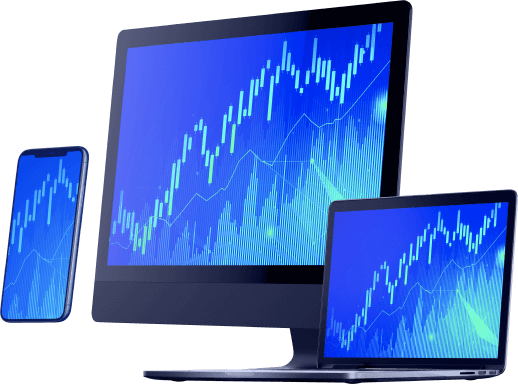The Ultimate Guide to Buying & Selling: Tips & Strategies for Success
Financial trading involves buying and selling various assets that can be cash instruments such as bonds, shares, and Forex or derivative instruments, which includes Contract for Difference (CFD), Options, and Futures. There are two possibilities of buying or selling financial instruments; one is that trade can be made in organized marketplaces such as exchanges, and second is trading over the counter where two parties may agree to exchange assets with each other like when you trade CFD with a financial service provider.

Course name
Start trading
Buying and Selling in CFD
Due to a wide number of financial products and instruments, the financial markets have grown over the years, and that allows individuals to participate and invest in the market that seems potentially profitable to them. Some of the popular financial markets include Shares, Bonds, Commodities, Forex, Indices, and Crypto-currency.
The Need to Understand Ask Price and Bid Price:
The most important factor in the buying and selling of different assets or security is its price in the market. The two pricing information that you need to know before trading are the ‘Ask Price’ and the ‘Bid Price.’ The two-way price quotation represents the best price that the asset can be bought or sold.
- Ask Price:
It is the lowest price that a seller is willing to accept for a security
- Bid Price:
It is the highest price that a buyer is willing to pay for a security
What is Spread and How to Calculate it?
A transaction or trade takes place when both the buyer and seller agree on the price of a security or asset that is not lower than the ask price and not higher than the bid price. The difference between the bid and ask price is called the ‘Spread,’ or the ‘Bid-Ask Spread,’ and it defines the liquidity or profit of the market. A trade occurs when the buyer accepts the Ask price or the seller takes the Bid price.
A given asset price will rise if there are more buyers than sellers, and similarly, the asset’s price will fall if there are more sellers than buyers. Spreads depend on the liquidity along with the supply and demand of the particular asset. The assets with the lowest ‘Bid-Ask Spread’ are considered the most liquid such as currencies. In stocks, bigger companies having high volumes tend to have low spreads while smaller companies have bigger spreads.
Spread = Ask Price – Bid Price
If a stock has Bid/Ask of £9.95 / £10, then
Spread = 10 – 9.95 = 0.05 or 5%
For example, Alex wants to buy shares of startup sports goods maker ‘Focus.’ The shares of Focus are selling at £2.80, which is the ‘Ask price.’ The ‘Bid price’ for Focus is £2.75. The ‘Bid-Ask Spread’ is 5 pence, and as a percentage, it is 1.785%.
Percentage Calculation= 5/ ((2.80/100)*100) = 1.785%
For startup companies, the spread can be wide because the shares are not popular, and there is less competition. But most importantly, it would be hard to find a buyer when you want to sell the shares quickly. The share prices fluctuate all the time. If Alex wants to buy Focus shares at £2.80, then it would cost him £280, and if he decides to sell the shares immediately, then it would be sold at £2.75 and cost him £275. Thus Alex would lose £5.
The bigger the spread, the greater the uncertainty, and the more money you could lose if you want to
sell quickly. Both ask, and bid prices are mostly used in buying or selling shares in the
stock market. The ‘ask and bid’ price help both the buyer and seller negotiate the trade. The
mediating between the buyer and seller is done by the third party called ‘money makers’ who get
involved in the trade and absorb the risk by holding the stock and selling it at the best possible
price themselves.
Why People Buy and Sell Financial Instruments:
Financial instruments include the assets and securities that can be traded and includes cash instruments and derivative instruments. The financial instruments can be further categorized into ‘Equity-based’ and ‘Debt-based.’ Financial instruments fall in six popular categories that are Shares, Forex, Bonds, Indices, Commodities, and Derivatives.
The cash instruments can be securities that can easily be transferred and loans or deposits, which are decided among the lenders and borrowers. The market factors determine the price of a security. The value of derivative instruments, on the other hand, depends on the underlying factors that include assets, interest rates, and indices.
One way to buy and sell financial instruments is through a Financial service provider that allows you to open an account by depositing a small amount called ‘Margin’ and get large exposure of the market using leverage.
The Capital Market and CFD Trading:
A CFD is a derivative contract between a financial service provider and a trader who agree on the price difference of the underlying asset from the opening to the closing of the trade. CFD allows a trade to potentially benifit from both a rising and falling market as the contract offers both the buy and sell options.
When you place a CFD trade, you will either open a trade position with buy or sell on the price of the underlying asset and assuming if the price of the asset will rise or fall. Once you have placed the trade and the price has moved in your favored direction, and far from the cost of the spread, then you will make a profit. Similarly, if the price remains between the spread or just outside, then you will incur a loss while trading.
CFDs allow traders to gain a wide range of financial markets, which would otherwise be difficult to gain exposure. A trader has access to price difference of shares, bonds, forex, commodities, and cryptocurrencies from a single platform.
The Bid-Ask Spread in CFD Trading:
In Contracts for Difference (CFD) trading, the spread is defined as the difference between the Bid or Ask price, or the difference between the Buy or Sell price for a particular financial instrument. The Buy or Bid price will always be higher than the Ask or Sell price, and the market price would be at the center of the two prices.
The Bid-Ask spread is one the vital component to knowing about when trading CFDs as tighter the spread, the more profit you will get, and likewise, if the spread is wide, then there will be potential losses.
Spread is also defined as the cost of trading; thinner spreads help you to either make large profits or reduce the losses after you have closed your position. When the market is volatile, the spreads tend to widen, and the cost or risk of trading increases, but it can result in both a profit or loss.
Trading position in CFD Trading:
CFD allow traders to speculate on the price difference of the underlying asset without having to own an asset. Also, a trader might benefit by going both Long or Short when speculating the price of an asset. With CFD, you use margin and go ‘Long’ if you think the price will rise, and similarly, go ‘Short’ when you think the prices will fall.
CFDs can be traded on a wide range of financial assets such as Shares, Forex, Commodities, Indices, and Cryptocurrencies. Every point that moves in the direction you have speculated helps you to increase your profits. Likewise, every point that moves opposite to your prediction, then you tend to incur a loss.
CFDs are a leveraged financial product, which means, as a trader, you need to put a smaller deposit called ‘Margin’ to open a larger position and enter a trade. Margin trading enables you to magnify your profits, but your losses will also be magnified.
The information above is for education purposes only and cannot be considered as investment advice. Past performance is not reliable indicator of future results.



